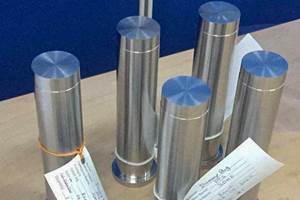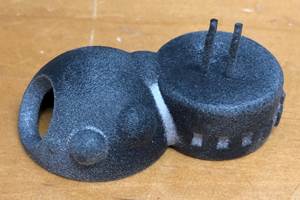Observations on the Development of Additive
An ASTM leader describes the current and changing role of AM for industry.
In order for processes to be performed repeatedly so that the products output are as they need to be, there needs to be standards. ASTM International is the organization that is dedicated to developing standards for a variety of things, one of which is additive manufacturing. The organization formed its Committee on Additive Manufacturing Technologies in 2009. It has more than 500 members representing 25 different companies. So far 14 standards have been developed, ranging from things like “Practice for Reporting Data for Test Specimens Prepared by AM” to “Guide for Directed Energy Deposition of Metals.”
ASTM is working with research organizations, academia, government agencies, trade organizations, developers, users, and more to do this work.
Richard Huff is the Additive Manufacturing Business Development Manager for ASTM International within its AM Center of Excellence, a position he took in 2020. Prior to joining the organization he’d worked for GE Additive and Caterpillar. Drawing on this experience, he offers some observations on the applicability of additive to manufacturing:
Niches and Their Value
While there is a seemingly ever-growing number of companies, processes and materials in the AM space, he notes that AM is still thriving in niches.
But there is nothing wrong with niches. They are found when the additive process is advantageous to the part being produced, as was the case with GE and the development of components for the turboprop market. And they become seeds, from the personnel standpoint, allowing for the development of internal competencies with the process.
That latter point is important because Huff says that when it comes to additive “It is not easy to drop it into a company and make it work.”
AM and NDP
Another consideration is what the process is being brought in to do. Huff suggests that the additive team must be aligned with those in a company who are doing new product development (NPD).
He says that just trying to replace existing components will probably not provide the business case that would justify a change (realize that not only is there the cost associated with the process, but going to a different build method means that there will need to be a revalidation of the part, which is in itself an investment in both time and money). “Additive needs to be integrated upstream in the entire business process.”
If that happens, then there is the benefit that during product development it is possible to have a design freeze much closer to the point of launch rather than having to lock it down earlier in order to get the tooling manufactured.
What’s more, he says that if additive is one of the processed involved in making products, then product designers and engineers have the opportunity to rethink components in terms of characteristics ranging from mass to functionality.
Advantage for EVs
Huff notes, for example, that as the auto industry is developing more battery electric vehicles, there is the need for reduced mass in order to maximize range. So that is an area where additive can provide the necessary capabilities. And that can lead to greater production volumes.
There are some signs he sees that suggest change in this direction.
Huff says that there is increasing investment by AM companies in obtaining the capacity to run serial production parts. “Automation. Before companies didn’t need it because they were doing limited runs.”
Material Change
He also notes that while plenty of work has been done on developing superalloy powders for aerospace applications, the more conventional steels and aluminum that are characteristic of auto were not given a whole lot of attention until now. “Now,” Huff says, “a lot of work is going on in those materials,” adding, “Material development leads to more applications.”
Related Content
A Framework for Qualifying Additively Manufactured Parts
A framework developed by The Barnes Global Advisors illustrates considerations and steps for qualifying additively manufactured parts, using an example familiar to those in AM: the 3D printed bottle opener.
Read MoreConocoPhillips Sees Oil and Gas Supply Chain Opportunity With Additive Manufacturing
Production of parts when needed and where needed can respond to the oil and gas sector’s multibillion-dollar challenge of holding parts in inventory. The supply chain benefit will justify additive even before the design freedoms are explored.
Read More6 Considerations When Launching an Additive Startup
Recent additive manufacturing (AM) startup owner, JP Kinerk, shares his experience by offering helpful advice for others just starting out in the additive realm.
Read MoreDecentralized Manufacturing Network Aims to Make 3D Printers a Shared Global Resource
The 3DOS additive manufacturing network will let OEMs and creators take advantage of open 3D printer capacity anywhere in the world.
Read MoreRead Next
Alquist 3D Looks Toward a Carbon-Sequestering Future with 3D Printed Infrastructure
The Colorado startup aims to reduce the carbon footprint of new buildings, homes and city infrastructure with robotic 3D printing and a specialized geopolymer material.
Read MoreProfilometry-Based Indentation Plastometry (PIP) as an Alternative to Standard Tensile Testing
UK-based Plastometrex offers a benchtop testing device utilizing PIP to quickly and easily analyze the yield strength, tensile strength and uniform elongation of samples and even printed parts. The solution is particularly useful for additive manufacturing.
Read MorePostprocessing Steps and Costs for Metal 3D Printing
When your metal part is done 3D printing, you just pull it out of the machine and start using it, right? Not exactly.
Read More
.jpg;width=70;height=70;mode=crop)




















